Menu
You can manage your membership and billing method by clicking here
Terms of Service
Privacy Policy
Copyright © 2025 Office of Immigration Australia, a private company registered in Australia. All Rights Reserved.

Checking membership status...
 EXCLUSIVE MEMBERS ONLY ACCESS
EXCLUSIVE MEMBERS ONLY ACCESSTo access this month’s edition & Member’s only resources, enter your registered email address.

This bulletin is for members only, and provides our members with month to month updates on Australian immigration policy changes and consequential opportunities. Opportunities are found via federal and state government policy shifts for the demand and supply for certain occupations.
This bulletin will keep you up to date so that you do not have to employ expensive immigration lawyers to provide you with monthly research.
During May 2021, there still has not been any official decision by the Australian federal government about when the borders of the country will open. During the recent Federal Budget Meeting ministers have projected borders opening in mid-2022.
The official decision about when Australia’s borders will be opened will be made when the government believes it is appropriate for the Covid-19 circumstances of the country. Some have suggested this should be when 70 – 80% of Australia’s population is fully vaccinated.
Regardless of border closures, however, priority access will still be given to those that are selected applicants on the “Priority Migration Skilled Occupation List” (which has been updated this month) OR to those that have been offered employment (sponsorship by an Australian company or organisation) and are on the Critical skilled occupation list.
Now is the perfect time to start planning for migration to Australia. Let’s take a look at what is planned for May 2021 in Australian Immigration.
Welcome to May 2021! As we enter the fifth month of the new year, join us for a look at the latest news and developments in the world of Australian Immigration…Read more
The Australian Government’s priority for migration in 2020-21 is supporting Australia’s economic and public health response to, and recovery from, the COVID-19 pandemic. Read more
After nearly a year shut off from the world, New Zealand has cracked open its borders, with a trans-Tasman travel bubble allowing two-way quarantine-free travel with … Read more
Australia’s PM Scott Morrison receives a dose of the COVID-19 vaccine, and more… Read more
As legislation and travel requirements are constantly changing, we strongly recommend obtaining advice on your individual situation from a Registered Migration Agent.
Please click here to book a consultation with one of our Registered Australian Migration Agents, located in Australia.

Welcome to May 2021! As we enter the fifth month of the new year, join us for a look at the latest news and developments in the world of Australian Immigration.
 Immigration has recently updated the Priority Migration Skilled Occupation List (PMSOL) to add Veterinarians to the growing list of critical occupations sectors.
Immigration has recently updated the Priority Migration Skilled Occupation List (PMSOL) to add Veterinarians to the growing list of critical occupations sectors.
Employer-sponsored applicants in the PMSOL occupations will be given priority processing for both nomination and visa applications in the following visa types:
Applicants and existing employer-sponsored visa holders on the PMSOL can also request a travel exemption to enter Australia during the current border closures. However, the mandatory 14-day quarantine period still applies and will still be at the traveller or sponsor’s expense.
Occupations on the PMSOL as of 11 MAY 2021 Definition Newly released legislation defines a business as being in the tourism and hospitality sector where it is classified under the Australian and New Zealand Standard Industrial Classification (ANZSIC) system as being in the division of ‘Accommodation and Food Services’. This division includes Cafes, Restaurants, Takeaway Food Providers, Pubs, Taverns, Bars, Night Clubs, Hotels, Motels, Resorts, Ski Lodges, and Hostels. The legislation also allows for businesses whose primary purpose is to directly provide a service to tourists, even when their activities are not listed as an Accommodation and Food Service under the ANZSIC system. COVID-19 Pandemic Event Visa Effective immediately, temporary visa holders working or intending to work in tourism and hospitality will be able to access a 12-month Subclass 408 COVID-19 Pandemic Event visa with work rights. Applicants can apply within 90 days of visa expiry – an extension on the current 28-day requirement – to be able to continue working and supporting an area critical to Australia’s economic recovery. Student Visa Student visa holders employed in tourism and hospitality are now able to work beyond their 40-hour per fortnight limit. They join the list of specified industries including: Further information is available on the Department of Immigration website. Please note the Student visa changes are temporary, however, there has been no announced end date at this stage.Tourism and Hospitality Added to Critical Sectors
 This week the Minister for Immigration has introduced changes to the Subclass 408 COVID-19 Pandemic Event visa and Subclass 500 Student visa for workers in the Hospitality and Tourism sectors.
Read more
This week the Minister for Immigration has introduced changes to the Subclass 408 COVID-19 Pandemic Event visa and Subclass 500 Student visa for workers in the Hospitality and Tourism sectors.
Read more
The Australian Government’s priority for migration in 2020-21 is supporting Australia’s economic and public health response to, and recovery from, the COVID-19 pandemic. This includes an emphasis on migrants who will make productive investments in Australia, create jobs for Australians, provide critical health and medical skills, and support economic productivity.
Under the Territory Migration Agreement, the ACT is allocated a fixed number of nominations each year. The Australian Government has directed that the nominations provided to states and territories are to focus on applicants critical to supporting the COVID-19 response. This includes individuals providing critical or specialist medical services, those with critical skills required to maintain the supply of essential goods and services, and people who deliver services in sectors critical to Australia’s economic recovery.
If you are interested in migrating to Australia and living in Canberra, you may be eligible to apply for ACT nomination of a Skilled Migration visa. The Australian Capital Territory (ACT) offers Territory nomination under the following skilled migration streams: You must read the ACT nomination guidelines carefully to make sure that you are eligible to apply for ACT nomination. If you are eligible, you can formally express an interest in applying for ACT nomination by completing a score-based ‘Canberra Matrix’ where you are allocated points against demonstrated economic contribution or benefit and/or a genuine commitment to be part of the ACT community. Each month, the highest-ranked candidates under the scoring system will then be selected and invited to apply for ACT 491 / 190 nomination. NSW is welcoming business migrants and entrepreneurs who want to set up a business or invest in New South Wales. Applications for subclass 188 visa nomination close 5pm (AEST) Monday 31 May 2021 NSW will close to new applications for all streams of the 188 visas from 5 pm Monday 31 May 2021. This is to ensure all applications for NSW nomination submitted before this time can be processed prior to the changes being implemented by the Department of Home Affairs on 1 July 2021. We strongly encourage you to submit a complete application to ensure it can be finalised by 30 June 2021. View the list of Permanent and Retirement Visas below for the NSW Business and Investment Migration Stream. Business Talent (Permanent) visa (subclass 132) – Significant Business History stream A visa is for experienced business owners under the age of 55 with a successful business career to operate a new or existing business in NSW. Business Innovation and Investment (Permanent) visa (subclass 888A) – Business Innovation stream This visa allows you to continue to own and manage a business in NSW if it has been actively operating throughout the last two years. Business Innovation and Investment (Permanent) visa (subclass 888B) – Investor stream A permanent visa that lets you continue investment and business activity in NSW if you have maintained your designated investment in NSW Waratah Bonds throughout the provisional visa period. Business Innovation and Investment (Permanent) visa (subclass 888C) – Significant Investor stream This visa lets you continue your investment activities in Australia permanently. Business Innovation and Investment (Permanent) visa (subclass 888E) – Entrepreneur stream A permanent visa that you continue your successful entrepreneurial activity in NSW if you reside in NSW. Business Owner (Permanent) visa (subclass 892) A visa that allows people who own and manage a business in Australia to stay in Australia indefinitely. The primary applicant must have a qualifying visa granted on a particular basis. Investor (Permanent) visa (subclass 893) A permanent resident visa for holders of a sponsored investor (provisional) visa (subclass 165) who have held a designated investment of $750,000 AUD for 4 years. Investor Retirement visa (subclass 405) – Rollover A temporary visa for self-funded retirees who have no dependents and want to live in Australia during their retirement years. “MEDICAL PRACTITIONERS” Medical Practitioners looking into opportunities, regions such as Northern Rivers, The Orana, Northern inland, Far West and Far South Coast are showing as having available needs. “NURSES” Nurses looking into opportunities, the majority of NSW regional areas are showing as having available needs. “Engineers” Mechanical Engineers & Electrical Engineers looking into opportunities, the majority of the NSW regional areas are showing as having available needs. For Civil Engineers, The Orana, The Hawksbury & Blue Mountains in Sydney, Northern inland, and Far South Coast are showing as having available needs. “Accountants” The Orana RDA now sponsors accountants. Many regions have dramatically increased the occupations available but most now only accept applicants from stream 1 and stream 2 pathways. Please check the ‘Designated Regional Areas (RDA)’ webpage for the individual requirements, which can be found at The Department of Home Affairs. Click here for the list. Regional Development Australia (RDA) offices will begin assisting NSW Treasury manage the subclass 491 visa in 2021. Each RDA office will accept and assess applications, and determine eligible occupations for their respective regions; however, nomination criteria is consistent across all regions. These criteria are outlined below. Information about how to apply will be made available on RDA websites as soon as possible. Links to participating region websites can be found below. RDA offices will focus on nominating applicants who are undertaking skilled work in critical sectors. These applicants are a priority for Government in supporting economic recovery following the impacts of COVID-19. You must meet the all criteria in one of the following three streams to be eligible for NSW nomination: Applicants who do not meet the criteria in one of these three streams may be refused unless otherwise agreed with NSW Treasury. ‘Closely related occupations’ are defined as those having the same ANZSCO unit group, i.e. sharing the same first four digits. ‘Designated regional areas’ are determined by Home Affairs. Please see their website for a list of regional NSW postcodes. To be eligible for NSW nomination under this stream you must: To be eligible for NSW nomination under this stream you must: To be eligible for NSW nomination under this stream you must meet all the criteria for at least one of the following categories: To be eligible for NSW nomination under this category you must: If you reside outside of Australia, you must: To be eligible for NSW nomination under this category you must: Alternative migration options for NSW NSW nomination for the Skilled Work Regional (Provisional) visa (subclass 491) is just one of a number of visa options for prospective skilled migrants. There is a range of visas offered by Home Affairs, including both temporary and permanent employer nominated visas. BSMQ State Nomination Program The Skilled Work Regional (Provisional) Subclass 491 visa (from 65 points and above) Only onshore applicants working in Queensland will be considered. The Subclass 491 visa is open to COVID critical skill or sectors as previously outlined: Please note: there is no specific skills list for the above, however applicants must meet one of the critical skills or sectors as listed above and email migration@qld.gov.au detailing how you meet this, including details of employer and role, and how this position is assisting in the COVID response or recovery. While they are accepting new EOIs, there is a significant backlog of 491 EOIs yet to be processed, therefore it could be a number of weeks before you receive an invitation. Please note: not all applicants will receive an invitation due to limited quota available. Please refrain from contacting BSMQ regarding your place in the queue as this significantly impacts our processing times and ability to provide you with a nomination. 491- SBO (Small Business Owner) Pathway The 491-SBO (Small Business Owners) pathway is OPEN. IMPORTANT: Applicants need to submit a 491-SBO Assessment Form prior to submitting an Expression of Interest (EOI), so that your EOI will be picked up. From 1 April 2021, the pre-existing business purchased will need to have been in operation for 2 years instead of 1 year. There will also need to be a minimum purchase price of $100,000 (rather than total investment in the business). Furthermore, commission agents or leasing agents of franchises (such as petrol stations), and home-based businesses (such as courier and cleaning businesses) will not be considered. These requirements are aimed at ensuring the program is sustainable in the long-term. Please note: businesses that have been purchased prior to 1 April 2021 are not subject to these requirements, however there must be a valid contract provided for the business before this date (ie business must have settled). Business Program The BSMQ business program closed at 12am (midnight AEST) on 24 February 2021. EOIs submitted on Skillselect before this time will picked-up and considered for nomination. Applications already invited and under consideration will continue to be assessed until the dates outlined below. Subclass 132 visa applicants This is the last cut off date to upload documents, as the final nomination date for nomination to the Department of Home Affairs is Tuesday 27 April 2021. If you are unable to submit your documents by Tuesday 20 April 2021, your application will be closed. Your subclass 132 visa application must be lodged with the Department of Home Affairs within 60 days of nomination, and the latest, by 30 June 2021. From the 1 July 2021 the subclass 132 stream will cease. Subclass 188 applicants Subclass 188 applicants who have received an invitation to upload documents must submit all supporting documents in the two-week period provided by BSMQ. Failure to do so could see the invitation cancelled. The last cut off date to upload documents to BSMQ for the subclass is Friday 18 June 2021. The last date for nomination by BSMQ under the current 188 criteria is 30 June. However, you can submit your visa application to Home Affairs after this date, as long as it meets the normal 60 day requirement. If you receive a nomination from 1 July 2021 by BSMQ you will be subject to the new subclass 188 criteria. The Skilled & Business Migration team continues processing all nominations received for South Australia’s skilled migration programs. Decisions on state nomination applications will be reflected in the ‘My Application’ section on the South Australian Skilled & Business Migration portal. Please be advised that offshore applicants with an existing EOI in SkillSelect may be invited to directly apply for state nomination in the current program year. These applicants have already been identified from a defined range of critical sectors. Further information regarding our offshore program, including occupations available, will be provided in conjunction with our 2021-2022 program opening in July 2021. Demand for places remains high and no changes to assessment guidelines or processes will be made. Tasmania will continue to accept applications for subclass 491 and 190 nominations until Friday, 11 June 2021 (5:00pm AEST). The 2021-22 State Nomination Program is expected to commence with a full quota in July 2021. Application status Subclass 190 – all nomination applications received by Friday, 11 June 2021 are expected to be considered and finalised before Wednesday, 30 June 2021. Subclass 491 – nomination applications are continuing to be processed on an ongoing basis and eligible candidates ranked and nominated according to the priorities below Applications that do not meet the eligibility criteria or are not ranked as sufficiently competitive will be declined nomination. Nomination priorities Applications are being considered according to these priorities, with those in critical roles nominated first. Critical roles For Tasmania critical roles include people: Lower skilled positions such as retail workers, harvest labour, delivery drivers, or warehouse staff are not considered to be critical roles. Applicants may first want to explore other visa options, including the Department of Home Affairs’ subclass 408 Pandemic Event stream visa.
New South Wales (NSW)
Skilled Work Regional visa (subclass 491) NSW
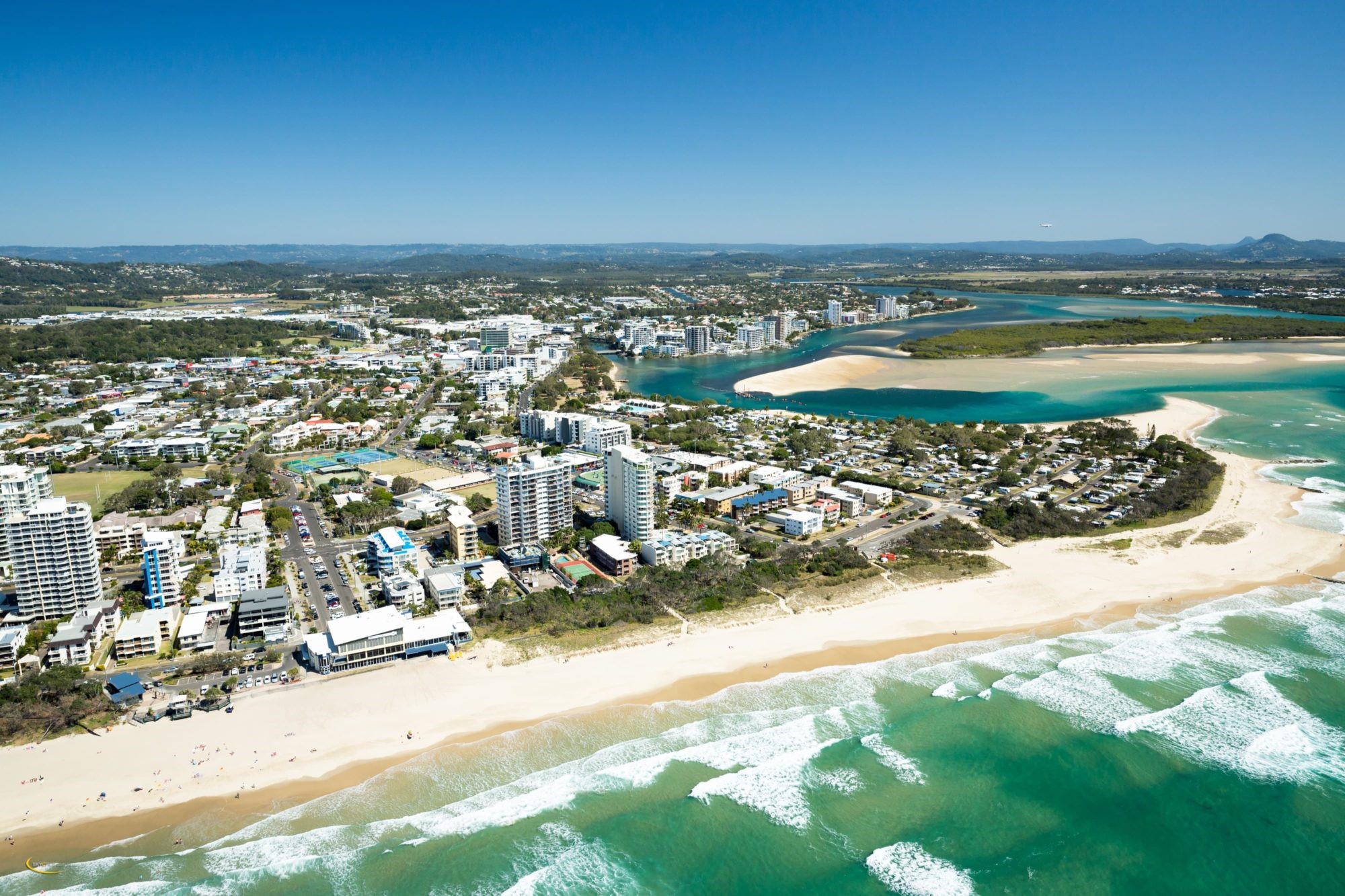 As of MAY 2021, the following participating regions for the below needed occupations are still in effect:
As of MAY 2021, the following participating regions for the below needed occupations are still in effect:2020-21 Financial Year Update – NSW
Nomination criteria
Queensland
LATEST NEWS from the Queensland migration programs and pathways – MAY 2021
Subclass 132 applicants who have received an invitation to upload documents must submit all supporting documents by Tuesday 20 April 2021.South Australia
Skilled Migration Program Update MAY 2021
Tasmania
2020–2021 Program Update – MAY 2021
Existing applicants who are not in critical roles are being considered only after priority applications for critical roles have been processed.
In practice, applications in priority categories 1-3 are assessed on an ongoing basis.
Periodically, other eligible applicants will be nominated if sufficient quota places are available.
Applications which are not able to be considered and ranked by Wednesday, 30 June 2021 will be closed and the service fee refunded.
Applications will not be refunded if they are processed but not ranked high enough to be nominated.
Competitive applicants with an expiring visa and no viable further visa options (such as subclass 485) may be considered as a priority where skilled employment is at risk, however visa expiry alone cannot be considered for prioritised assessment.
Read more
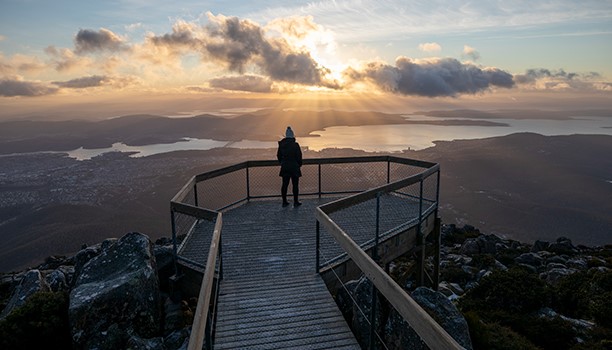
As of MAY 2021, the PRIORITY MIGRATION SKILLED OCCUPATION LIST (PMSOL) is still in effect.
As part of the Australian Government’s commitment to ensuring Australia’s COVID recovery, Immigration introduced a Priority Migration Skilled Occupation List (PMSOL) targeting occupations in the health care, construction, and IT sectors.
Employer-sponsored applicants in the PMSOL occupations will be given priority processing for both nomination and visa applications in the following visa types:
Applicants and existing employer-sponsored visa holders on the PMSOL can also request a travel exemption to enter Australia during the current border closures. However, the mandatory 14-day quarantine period still applies and will still be at the traveller or sponsor’s expense.
Immigration has recently updated the Priority Migration Skilled Occupation List (PMSOL) to add Veterinarians to the growing list of critical occupations sectors. As of MAY 2021, the occupations (ANZSCO code) are: General Skilled visa applicants in the above applications also appear to be receiving preference under the Independent and State/Territory Nominated visa programs. General Skilled Migration If you have the relevant skills and experience, you may consider applying for Skilled Migration visas such as Subclass 189, Subclass 190 or Subclass 491. These visas are point-tested, and the minimum point to apply is 65 points. Points will be given to you based on the following: For Subclass 190 and Subclass 491, there are state/territory nominations. Depending on the states/territory, the criteria may differ. These criteria change all the time, thus is it important always to check the latest rules. SkillSelect Invitation Rounds Immigration is now conducting SkillSelect invitation rounds on a quarterly basis (i.e. every 3 months) until the end of the 2020-2021 financial year. A round was due to be conducted in January, but results have not been made available as yet. COVID Testing for Travel From 22 January 2021, all travellers to Australia are required to undertake a COVID-19 test within 72 hours prior to departure. Only tests specified by the Australian Department of Health will be accepted, and negative test results must be presented to the flight crew before boardingThe Priority Migration Skilled Occupation List
Read more

New Zealand prime minister Jacinda Ardern announces ‘trans-Tasman travel bubble’ with Australia in pandemic milestone.
After nearly a year shut off from the world, New Zealand has cracked open its borders, with a trans-Tasman travel bubble allowing two-way quarantine-free travel with Australia.
The NZ prime minister, Jacinda Ardern, announced the bubble opened from 19 April, allowing quarantine-free travel between the two nations. Travellers from New Zealand have been able to enter selected Australian states without quarantining since October but the arrangements did not apply in the other direction.
Australia’s prime minister, Scott Morrison, applauded Ardern’s announcement while airlines in both countries hurriedly advertised hundreds of weekly flights and routes. However, tourism operators warned the benefits would be muted in the short term, as the first passengers would likely be low-spending travellers visiting family. At a press conference on Tuesday, Ardern said she was “confident not only in the state of Australia, but in our own ability to manage a travel arrangement”. More than 600,000 New Zealanders live in Australia, and many families straddle the border. “One sacrifice that has been particularly hard for many to bear over the past year has been the separation from friends and family who live in Australia, so today’s announcement will be a great relief for many,” Ardern said. “This is the next chapter.” Ardern said the arrangement – of two countries, both maintaining a full elimination strategy for Covid-19 opening up to international travel – was potentially unique in the world. The plan has been in the works for months now, but was paused repeatedly after outbreaks of Covid-19 on either side of the border. New Zealand officials have warned that those choosing to make the trip should be cautious and prepared, because another outbreak in either country could mean the border would close. Ardern said earlier that: “We may have scenarios where travel will shut down one way. It may therefore leave travellers – for a period of time – stranded on either side of the Tasman.” “Quarantine-free travel will not be what it was pre-Covid-19,” Ardern said. Travellers would not be able to travel if they had cold or flu symptoms or were awaiting a Covid-19 test result, she said. They would have to wear a mask on flights, and provide contact details for their time in New Zealand. She also said there would be random temperature checks at the airport and laid out a series of scenarios in which the bubble might be affected by new Covid cases, saying that “neither one of us wishes to export Covid to the other country”. If a case arose that was linked to a border worker, for example, travel would likely continue. But if cases popped up that were not immediately traced to the border, travel could pause. At this stage, a pre-departure test would not be required to travel, but Ardern said that could change in future. The move is being celebrated by New Zealand tourism businesses, many of which have struggled to survive over the past year without international tourism. In March, Tourism New Zealand forecast that opening travel to Australians could allow tourism revenue to recover to 70% of pre-Covid levels. With the travel bubble open, they expected a NZ$1bn boost to the New Zealand economy over the rest of the calendar year. Morrison said on Tuesday it was “tremendous” the arrangement would be operational in time for Anzac Day on 25 April – a day of armed forces remembrance shared by the two countries. “This will mean importantly jobs for Australia … it means more planes in the air, it means more jobs on the ground and in the air as well for our airlines,” Morrison said. Australia’s tourism sector praised the move but said the majority of initial arrivals from New Zealand would be low-spending travellers visiting family and friends. Australia’s Tourism and Transport Forum chief executive, Margy Osmond, heralded the specifics of Ardern’s announcement, noting it recognised “the need to manage the reality of risk”. Osmond said she hoped the bubble would encourage Australian states – which have shut internal borders to varying degrees throughout the pandemic – to adopt a uniform approach to managing border restrictions in response to incidents of community transmission. “This sends a very strong message to the [Australian] states to sort themselves out, and to the governments to speed up the vaccine rollout so we can open further,” Osmond told the Guardian. She predicted that most tourists from New Zealand who travel to Australia for leisure would visit Queensland – a region particularly affected by cessation in international tourism. Shortly after Ardern’s announcement, Qantas announced it would operate 122 return flights a week to New Zealand, including new routes, and that it expected the two-way bubble and Australians’ pent-up desire to travel internationally would see a return to 83% of pre-Covid operating capacity. Air New Zealand also announced it would fly to nine Australian cities, including a new route to Hobart. However, some airlines are still reeling from the effects of international and domestic border closures, with Virgin Australia – which went through voluntary administration early on in the pandemic – saying it would only begin flying to New Zealand from November. New Zealand’s government has come under increasing pressure as businesses across New Zealand struggle to survive the loss of income from overseas tourists since the country’s border closed a year ago. Just over half of the 923 operators who responded to a Tourism New Zealand survey this year said without an upturn in business they would have to shut down. Earlier on Tuesday the deputy prime minister, Grant Robertson, said the government would not apologise for delays announcing the bubble: “We will never apologise for putting the health and safety of New Zealanders first … we’re really confident we can do this now,” he said. “Nothing is without risk and that’s why we need to have these processes in place.” Ardern also noted that the change would free up around 1,000-1,300 rooms a fortnight in New Zealand’s managed isolation facilities. However, she said, some facilities were able to be used only for those coming from low-risk countries such as Australia, so could be decommissioned, and around 500 rooms would be held “as a contingency”, so she did not anticipate a large number of quarantine spaces to come online. A net 43,000 Australians moved to regional areas from capital cities in 2020, according to figures released by the Australian Bureau of Statistics (ABS) today. This was the largest net inflow to the regions since the beginning of the series in 2001. ABS Director of Demography Phil Browning said that in recent decades, more people moved from Australia’s capital cities to the regions than from the regions to the capitals, resulting in a net internal migration gain for regional areas. “There are still many residential moves occurring within Australia during the COVID-19 pandemic. In the 2020 calendar year, 233,100 people arrived to live in regional areas and 190,200 people departed for the capitals. This resulted in a net gain of 43,000 people for the regions, up from 18,900 in 2019.” “In 2020, regional Queensland had the biggest net inflow (17,000 people) of all the states. The regional areas of Victoria (13,400) and New South Wales (12,700) had the next largest net gains.” Greater Sydney had the largest net loss (-31,600 people) of all the capitals from internal migration in 2020. Melbourne lost a net 26,100 internal migrants, the largest annual net loss for Victoria’s capital on record. Brisbane (13,000 people), Perth (3,500) and Canberra (300) were the only capital cities to record net gains over 2020. In 2020, Victoria had its first net interstate loss (-12,700 people) for a calendar year since 2008. South Australia had its first net interstate migration gain (100) in almost 30 years, while Western Australia (1,400) recorded its first annual net gain since 2013. Queensland (30,000) had its highest net gain since 2004. This release includes quarterly statistics up to December 2020. Latest figures from the Australian Bureau of Statistics show more than 7-million people living in Australia were born elsewhere. Last year, over 7.6-million people living in Australia were born overseas, which equates to 30 percent of the overall population. This is an increase on the 28 percent born elsewhere in 2015, and the 27 percent in 2010. According to the new data released by the Australian Bureau of Statistics, which measures population statistics as at June 2020, people born in England continue to be the largest segment of migrants. “Australia’s population encompasses migrants born in nearly every country worldwide, highlighting our culturally diverse society,” said ABS Director of Migration Statistics, Jenny Dobak. Nearly a million migrants born in England “People born in England continue to be the largest group of overseas-born residents, accounting for 980,000 people. Those born in India became the second largest group in 2020 with 721,000 people,” she said. Other nations in the top 10 for supplying migrants include China (651 000 people); Philippines (310,000); Vietnam (270,000); South Africa (200,000) and Italy (178,000). In the year to 30 June 2020, preliminary migration estimates recorded that 510,000 people arrived to live in Australia, while 315,000 people left Australia to live overseas, the most departures ever recorded, the ABS said. There were a record 99,000 Australian citizens returning after living overseas in 2019-20, the greatest number of returns ever recorded. In the same year, over 61,000 Australians emigrated, a decline of 29 per cent from one year earlier. These changes likely reflect impacts from Covid-19. More people arrive in Australia than leave Additionally, 22,000 New Zealand citizens moved to Australia to live in the year ending 30 June 2020. However, in the same year, 21,000 New Zealanders departed Australia to live overseas. “Historically, more people immigrate to, than emigrate from, Australia thereby adding to the growth of the national population,” the ABS said in its report. “The various waves of migrants from numerous countries over time have had an important effect on the diversity of Australia’s population. “High levels of immigration in the years before 1891 resulted in 32% of the population enumerated as overseas-born in the first country-wide census in 1891. In 2020, the proportion of Australia’s population born overseas was 30%.”Net migration to regions highest on record: Australia
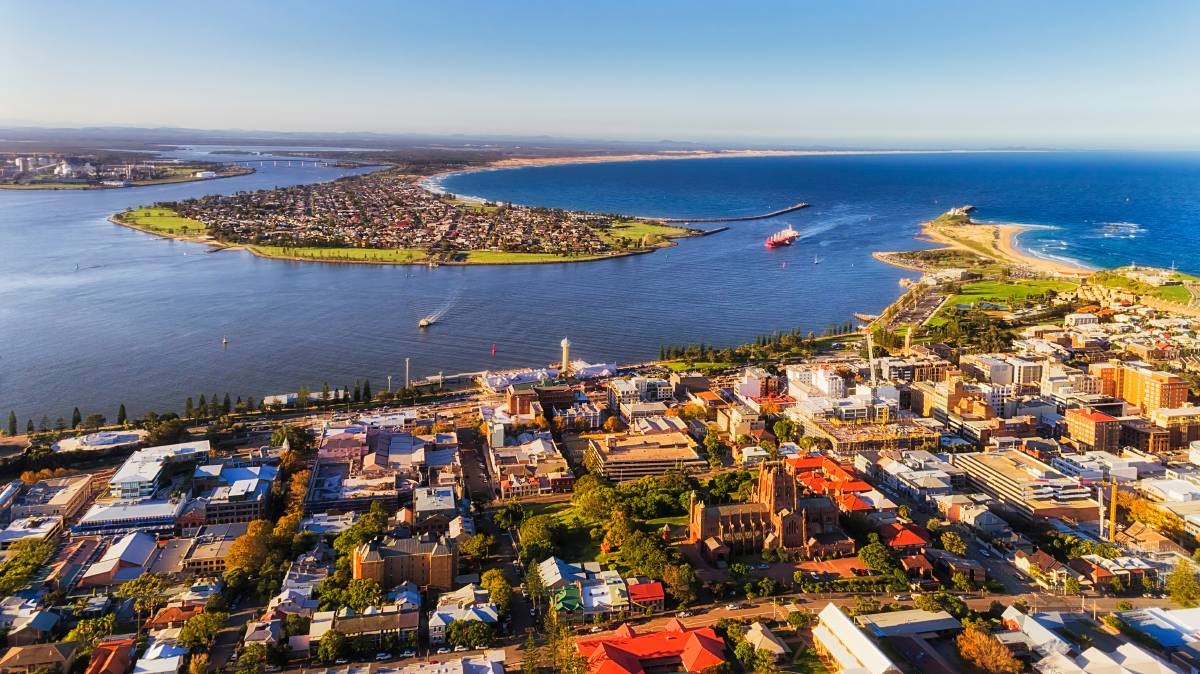 Newcastle is among the areas attracting Australian millennials.
Newcastle is among the areas attracting Australian millennials.Nearly one in three of Australia’s population is born overseas
 Read more
Read more

NRL Magic Round 2021 will be held at Suncorp Stadium from May 14-16.

Australian cricket team leaves India.

Ryan Papenhuyzen was flattened in the lead-up to Josh Addo-Carr’s first try against the Dragons

Nathan Cleary scored the first two tries of the game and finished the scoring in the last minute.

Australian MotoGP rider Jack Miller is on the top of the podium again, celebrating his victory after the French Grand Prix.

Artist Ayjay has been creating virtual reality artworks for years, which he can now sell as NFTs.
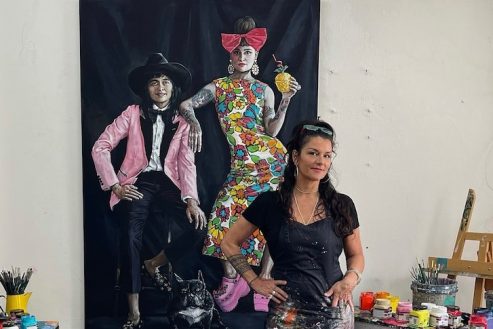
Tania Wursig is among the hundreds of artists putting the final touches to their 2021 Archibald Prize entries.
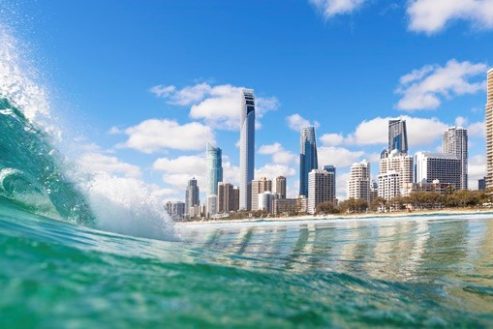
Wave breaking over Surfers Paradise, Queensland.
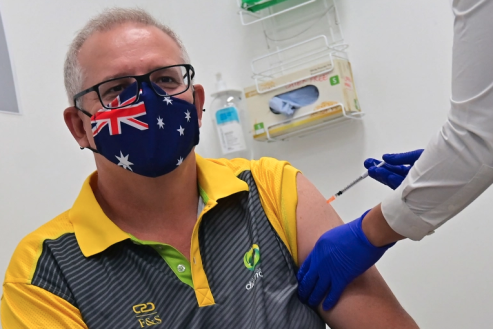
Australia’s PM Scott Morrison receives a dose of the COVID-19 vaccine
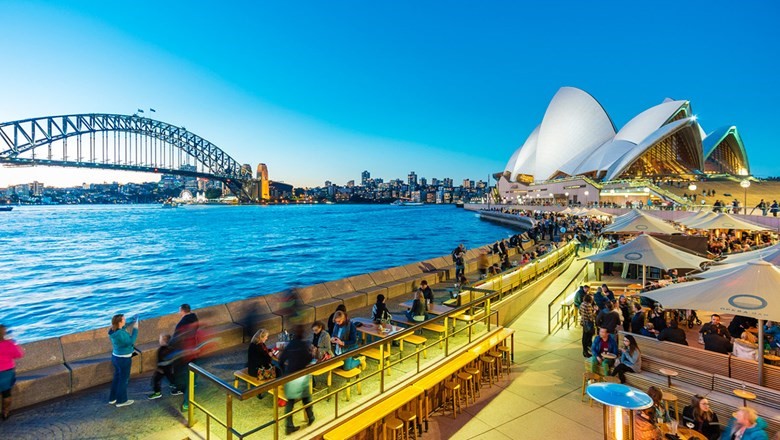
Bars and restaurants open for business in
Sydney, NSW
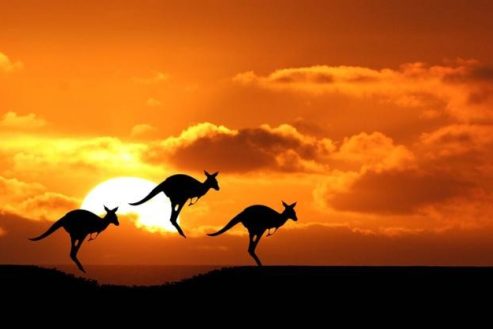
Kangaroos on the move during Sunrise in NSW.
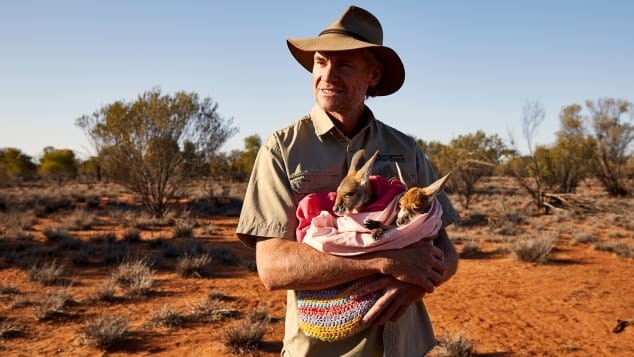
Chris Barns, better known by his nickname Brolga, is the founder of the Kangaroo Sanctuary in Alice Springs.
As legislation and travel requirements are constantly changing, we strongly recommend obtaining advice on your individual situation from a Registered Migration Agent. Please click here to book a consultation with one of our Registered Australian Migration Agents, located in Australia.



You can manage your membership and billing method by clicking here
Terms of Service
Privacy Policy
Copyright © 2025 Office of Immigration Australia, a private company registered in Australia. All Rights Reserved.